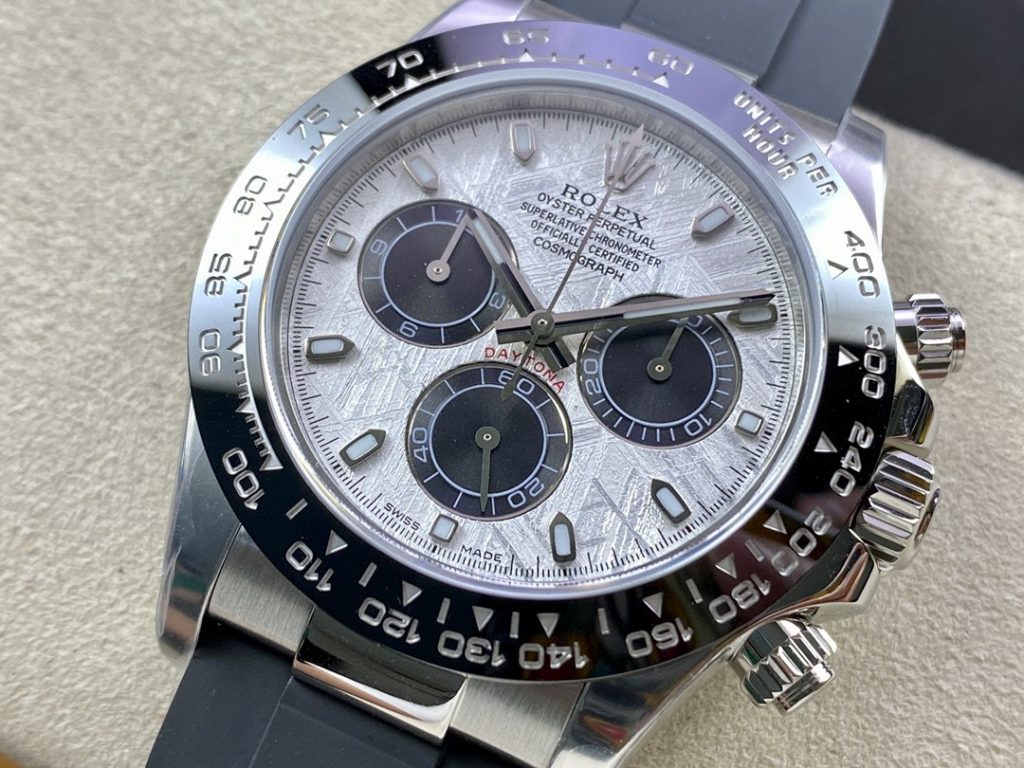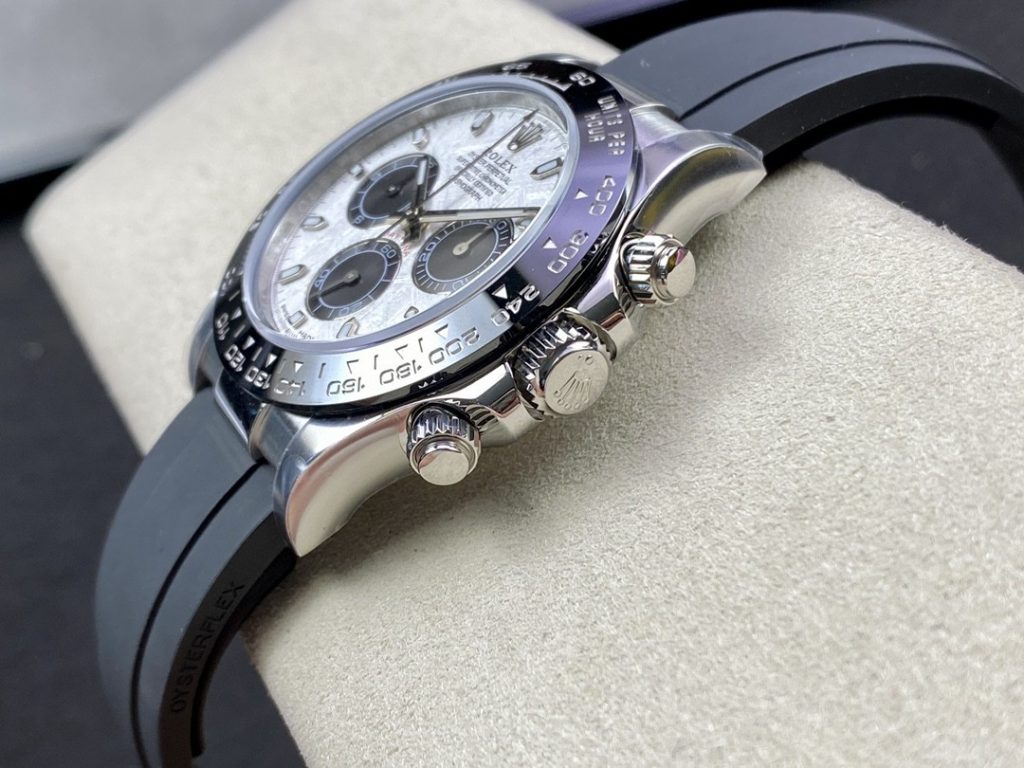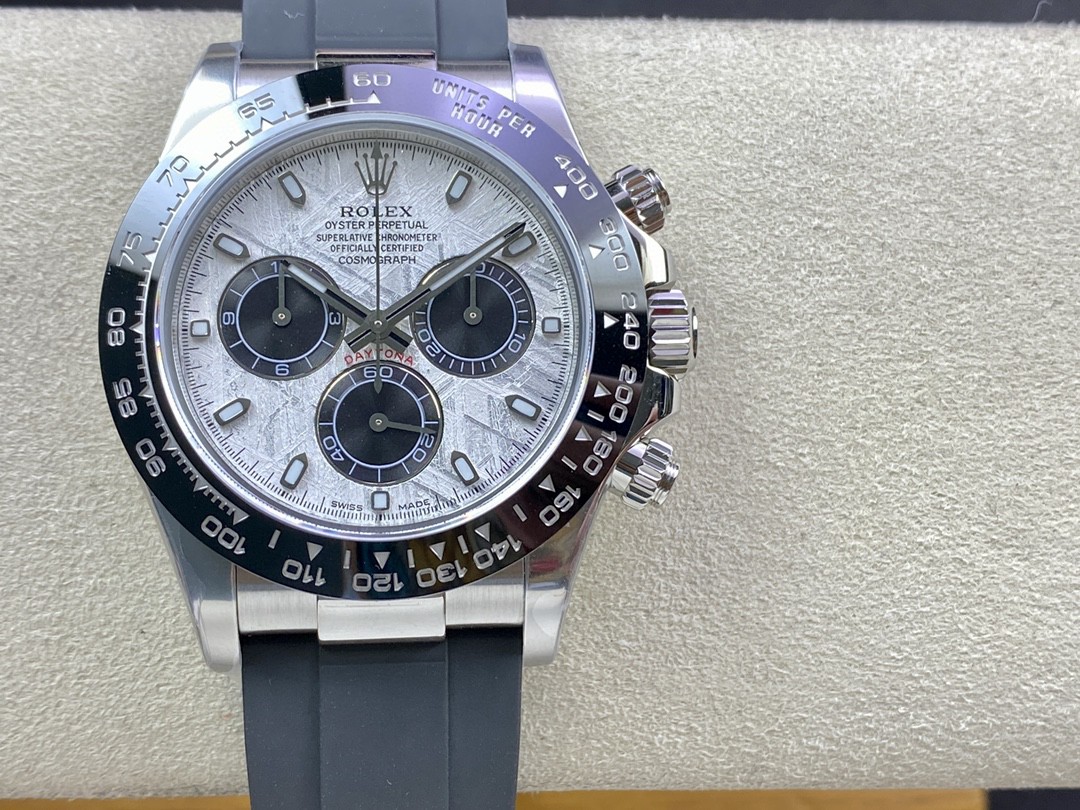If you’ve been browsing the world of replica watches, chances are the Rolex Daytona has caught your eye. It’s one of the most iconic chronographs in watchmaking history—and unsurprisingly, one of the most copied. But how can you tell whether a replica Rolex Daytona is high quality or just another poor imitation? Here are some key features to help beginners identify a premium replica from a mediocre one.
The most important thing to look for is the movement. A high-quality replica watch will often feature a clone 4130 movement, which mimics the function and layout of the original Rolex caliber. In particular, the second hand should sweep smoothly, and the chronograph pushers should start, stop, and reset fluidly. Movements like the Dandong 4130 or the Super Clone 4130 used by Noob Factory are widely respected in the replica scene.
Next, turn your attention to the dial details. The print should be sharp and clear—no smudges or uneven font sizes. The subdials need to be perfectly aligned and spaced exactly as they are on the genuine Daytona. Also, check the Rolex crown logo: its position, shape, and spacing can reveal a lot about the watch’s overall accuracy.
The case and bezel should also reflect precision. Many top-tier replicas use 904L stainless steel and feature a ceramic bezel with clean tachymeter markings. If the bezel font is too thick, or the case finishing feels cheap or rough, that’s a red flag.




Weight matters too. A high-end replica Rolex should feel solid on the wrist. Lightweight or rattling bracelets often signal poor craftsmanship. Noob Factory and Clean Factory are known for producing bracelets with solid end links, smooth clasps, and brushed/polished finishes that closely match the original.
In summary, identifying a high-quality replica Daytona comes down to understanding the details. From movement function to case finishing, and from dial layout to bracelet feel—every part matters. Comparing with authentic models and choosing trusted replica factories like Noob or Clean can greatly reduce your risk of disappointment.



